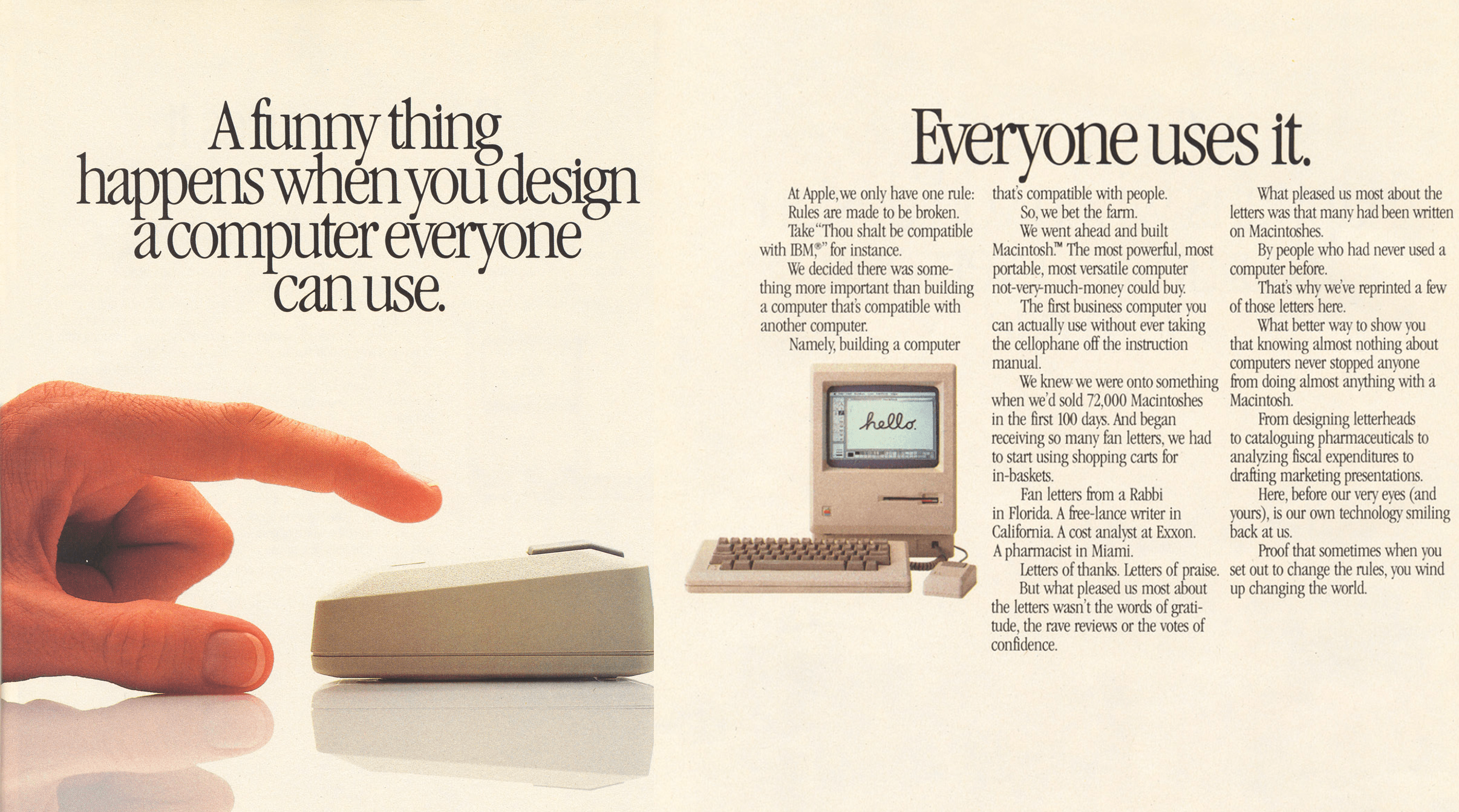
How to market mobile
If you want to market mobile, using phrases like “on the go” and “at your fingertips” are meaningless.
When the use case is in the title, it rarely pays to be so obvious. You can trust the customer to make the connections.
The success of mobile hasn’t been because you can respond to email “on the go”. It’s the exact opposite. It’s because mobile enables technology to do more jobs for more people in more places than anything in the history of mankind. It’s really about ubiquity and access. Yet marketers rarely communicate this benefit to customers.
Any large scale technological or product innovation requires a similar innovation in the way that it’s sold. Lazy stereotypes won’t cut it.
“Look for the hole” in the customer’s mind is one of the best strategies in marketing. Find the gap that nobody else is marketing to, and fill it. If everyone else is focusing on the small picture, try looking at the big one.
Right now, marketing equates mobile with a narrowly defined market. But what if mobile was marketed where it already is – everywhere and for everyone. Suddenly, the market becomes not time pressed individuals, but anyone who has a mobile device. It lets you think big, and potentially sell big.
When Apple began to sell home computers, common wisdom would have told them to market its product to a very specific demographic. Market research would have told them males between the age 30–45 were most likely to buy their product, and its strengths would have been sold accordingly.

But Apple didn’t tell you who their product was for. They stated their position clearly and unequivocally – Apple computers are for everyone. It was indispensable, and you could use it anyway you liked. The use cases followed this positioning. Freelance writer? Apple’s for you. Rabbi? Apple’s for you. Hardware fanatic? Apple’s for you too.
Mobile marketers today can learn much from Apple’s attempts to sell what was a similarly new paradigm. You could just sell your product as “on the go”. Or you could sell the ability to use a product anywhere and everywhere you want. “Mobile” works just as well when you are sitting beside a desktop computer as when you are waiting for the subway.
Challenge the assumption that your customers will only use your product in certain ways. If you think nobody will ever use mobile that way, they probably already are. Mobile is at home, at work, and on the move.
If you’re trying to reach an audience of any kind of scale, stop limiting yourself to “the mobile use case”. Because if you keep selling your mobile product as a snack, don’t be surprised when nobody comes back for dinner.








